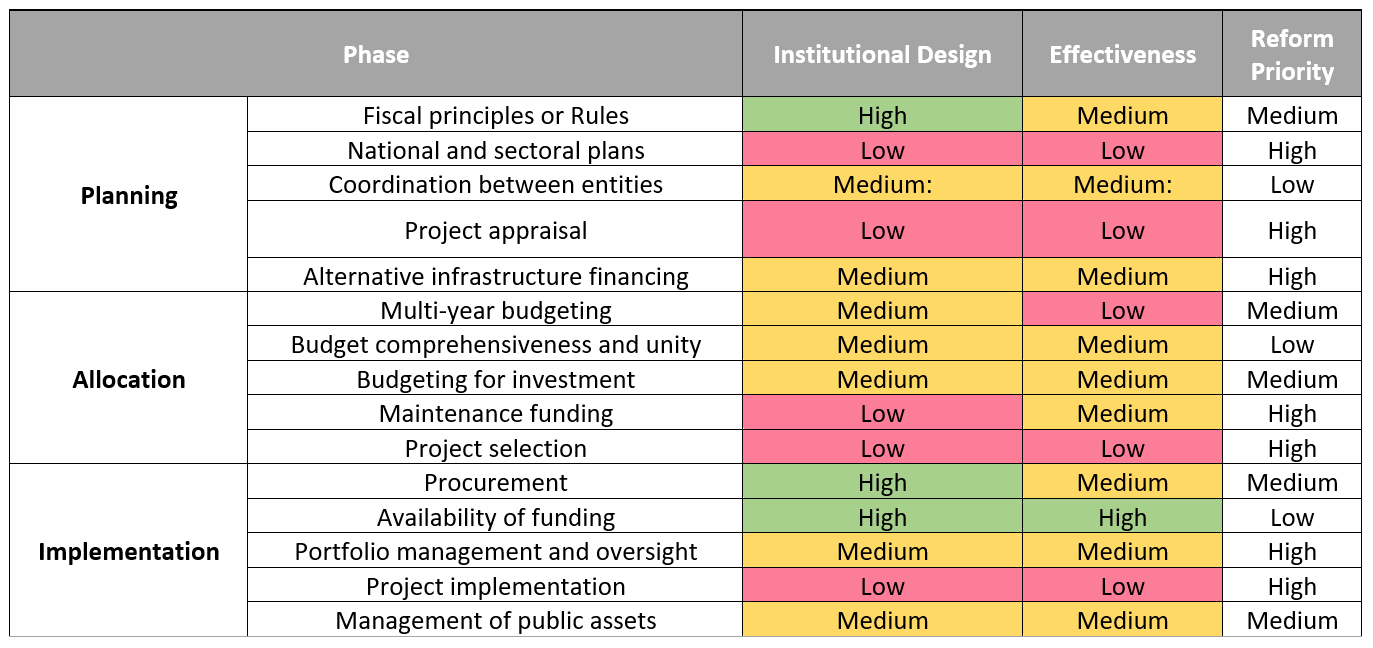Along with the growing role of the state[i], the assessment of the effectiveness of the relevant projects in terms of the impact on the welfare of the society and the economic analysis of the projects in general become more relevant. Among such state projects, investment (capital) projects hold a special place due to their long-term vision and the wide range and scale of their impacts (for example, the construction of roads, schools, and other infrastructure that we use for decades). It is important to understand how effective and justified each investment financed from the budget is.
Effective implementation of investment (capital) projects is an important basis for the country's development and economic progress. Investment projects differ from other types of projects in that their management, including pre-selection and evaluation stages, as well as implementation and monitoring, requires detailed analysis and, therefore, a lot of time and professional human resources.
How does the IMF assess public investment?
Public Investment Management Assessment (PIMA[ii]) is a methodology produced by the International Monetary Fund (IMF) for evaluating capital projects. PIMA assesses 15 categories in three main stages of the public investment cycle:
- Planning - how are investments planned and is there a long-term vision?
- Allocation - how is the budget allocated to different sectors and projects?
- Implementation - how are projects carried out in practice and to what extent do they create real results?
In accordance with the PIMA framework, the relevant public institutions are evaluated according to both institutional design (organization, policies, rules and procedures - "on paper") and effectiveness (achievement of the set goal in practice or beneficial impact - "in practice").
PIMA assessments in different countries have shown that countries lose about 30% of the returns from investments precisely because of the inefficiency in the process of managing public investments[iii]. These losses depend significantly on the level of development of the country. For example, in low-income developing countries (LIDC) the loss is 40%, in emerging market economies (EME) - 27%, and in advanced economies (AE) - only 13% (Diagram 1).
Diagram 1. Loss of returns from investments due to inefficiency in the process of managing public investments (IMF, 2019)

The Public Investment Management Assessment (PIMA) of Georgia by the IMF was carried out in 2018[iv]. The results of the assessment are different:
- According to both institutional design ("on paper") and effectiveness ("in practice"), among comparable countries in the world (emerging market economies - EME and EU countries), Georgia is promoted in several aspects, for example: procurement, availability of financing, monitoring of assets.
- Georgia was generally rated average according to the 15 categories of PIMA (Table 1). Low evaluations are noteworthy both at the project appraisal and at the stages of project selection and implementation; There are also low ratings in the category of national and sectoral planning. A high score was recorded in the category of availability of financing; High ratings were also recorded in the categories of fiscal principles and rules and procurement, however, only in terms of institutional design ("on paper") and not in terms of effectiveness ("in practice").
Table 1. PIMA assessment for Georgia (IMF, 2018)

It is worth noting that new categories have been added to the 15-component PIMA assessment under the Climate Dimension (C-PIMA[v]), which assesses countries' capacity to manage climate-related investments. The IMF's official website[vi] notes that both an updated PIMA assessment and a C-PIMA assessment for Georgia were developed in July 2022, however, neither report is available yet.
How does cost-benefit analysis (CBA) help?
The most common method of investment evaluation in international practice is cost-benefit analysis (CBA), which compares policy/project alternatives and assesses (1) how the welfare of society changes as a result of their implementation and (2) how the relevant costs and benefits are distributed among different groups in society. A new road can reduce travel time and fuel costs, increase businesses' access to markets and create jobs - all of which are economic benefits for the entire community and are addressed in the CBA. Besides, CBA takes into account non-market benefits (for example, environmental protection, health improvement, access to education), i.e. those impacts that are often not monetized, but significantly determine the quality of society's development.
International experience shows that the use of CBA as a framework for assessing investment projects has increased dramatically over the last 30 years worldwide[vii]. This growth is observed both in the case of individual countries and in the diversity of sectors where CBA is implemented.
How do PIMA and CBA work together?
We can say that effective public investment management (PIM) and adherence to cost-benefit analysis (CBA) principles are mutually reinforcing pillars for sound fiscal governance and sustainable economic development. PIMA sets out the rules and processes for how the investment should be managed; and CBA helps us choose those projects that actually create the highest social value. When these two approaches work together, the result is much more stable: Money from the budget is distributed more wisely, decisions are more transparent and justified, and the society accepts those projects that actually improve the quality of life.
Economic analysis is not just a technical procedure - it is a way to ensure that state expenditures and investments create the maximum benefit for society. Cost-Benefit Analysis (CBA) helps us find the balance between cost and outcome, and effective Public Investment Management (PIM) ensures that this balance is translated into day-to-day management. As data-driven decisions become the norm, investment is no longer just about building infrastructure - it becomes a tool for measuring social progress.
[i] “Government spending in early-industrialised countries grew remarkably during the last century”.
[ii] Public Investment Management Assessment (PIMA).
https://infrastructuregovern.imf.org/content/PIMA/Home/PimaTool/What-is-PIMA.html#tab_7
[iii] IMF (2019). Public Investment Management Assessment (PIMA) - Strengthening Infrastructure Governance.
https://www.imf.org/external/np/fad/publicinvestment/pdf/PIMA.pdf
[iv] IMF (2018). “Public Investment Management Assessment (PIMA) of Georgia - Technical Assistance Report”.
https://infrastructuregovern.imf.org/content/dam/PIMA/Countries/Georgia/Documents/GeorgiaPIMATAR.pdf
[v] The Climate-Public Investment Management Assessment (C-PIMA).
https://infrastructuregovern.imf.org/content/PIMA/Home/PimaTool/C-PIMA.html
[vi] IMF’s recent engagements on infrastructure governance in Georgia.
[vii] Jiang, W., Marggraf, R. (2021). “The origin of cost–benefit analysis: a comparative view of France and the United States”.
https://resource-allocation.biomedcentral.com/articles/10.1186/s12962-021-00330-3#citeas






